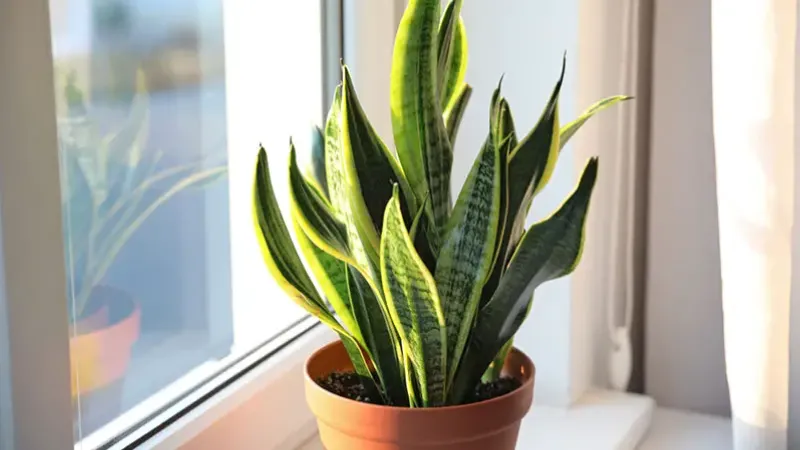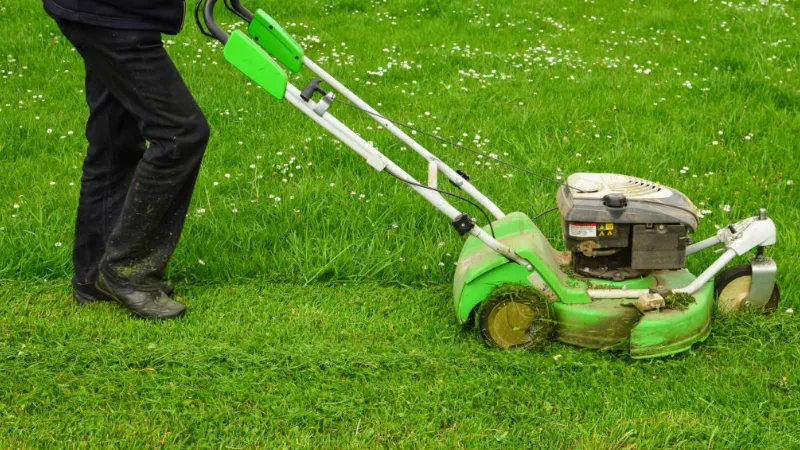If you’ve been keeping a snake plant in your house or office, you may have noticed that its leaves have begun to turn yellow. This can be concerning, but don’t be alarmed—there’s usually a reason why it’s happening, and it can be fixed! This blog post will go over the causes of your snake plant turning yellow as well as suggestions for fixing the issue.
The most frequent causes of yellowing snake plant leaves are water stress, root rot, excessive direct light, temperature changes, fungal diseases, pests, and nutrient deficiencies.
Don’t worry if your snake plant is showing some yellow leaves, though. With a little investigation, you should be able to figure out the cause and take steps to fix the problem and have a healthy snake plant. Please read on.
Causes of Snake Plant Leaves Turning Yellow
There are several causes for yellowing snake plant leaves. The most common reason is:
Overwatering
The majority of indoor house plants’ yellowing leaves are first caused by overwatering. Plants generally dislike sitting in excess water. Root rot from standing water can kill your plant.
Remember that snake plants don’t actually require much water. Between waterings, they can go quite a while.
Insert your finger about 2 inches into the soil to check for overwatering. Don’t water it again until it dries out if it feels wet.
Remove your plant from the pot if it is being excessively watered. Remove any extra water and soggy soil, then repot the plant in new potting soil.
Be sure that your pot has drainage holes to prevent excess water from pooling in the future.
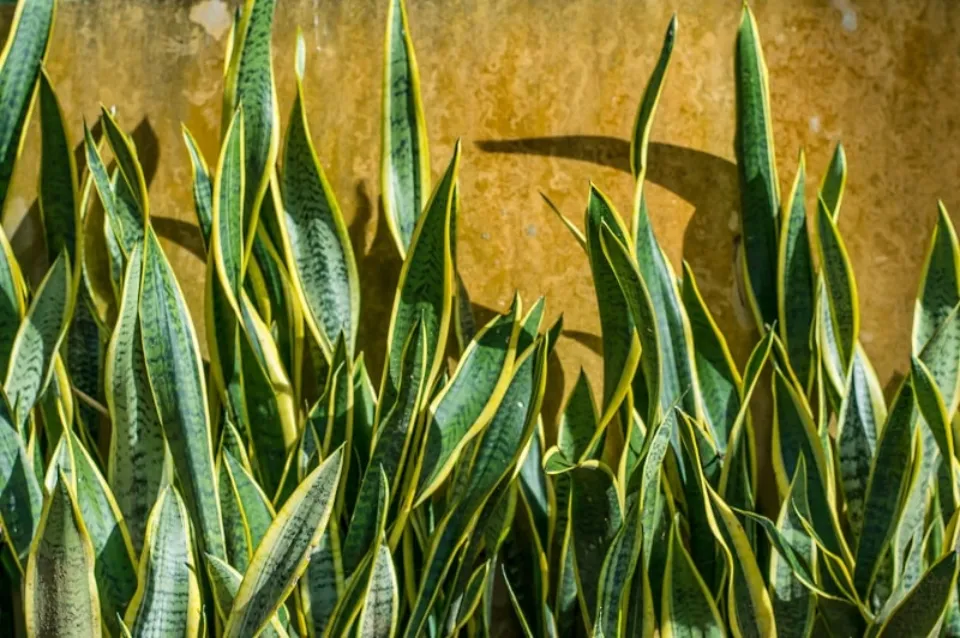
Low Humidity
Although I find leaf drop to be much less common than overwatering, low humidity can still cause leaf drop. The leaves typically develop crispy, brown spots (often on the tips). Afterward, the leaves may turn yellow.
These symptoms point to the plant’s drying out. Misting the leaves can help increase air humidity if the plant is being watered properly.
Inappropriate Light Levels
It is perhaps no surprise that this indoor low-light plant thrives in a shady spot. Yellowing leaves could therefore be an indication that the plant is getting too much sunlight.
‘The yellow leaves will develop leaf burn and turn brown at the edges if they are exposed to strong sunlight on a regular basis, according to Chris. He advises moving your snake plant into a location with lots of indirect light so that it can concentrate its energy on producing new growth.
Poor Drainage
Incorrect drainage is another important factor when learning how to care for succulents (including the snake plant). This most frequently happens in a pot with few drainage holes, which will result in root rot and obvious yellowing.
‘If a gardener suspects this is the cause of chlorosis, re-potting a snake plant into a potting mix that’s free-draining or shifting to a pot with more drainage holes will definitely help,’ Brody suggests.
If you see root rot, remove the dead root tissue before replanting the plant in new soil.
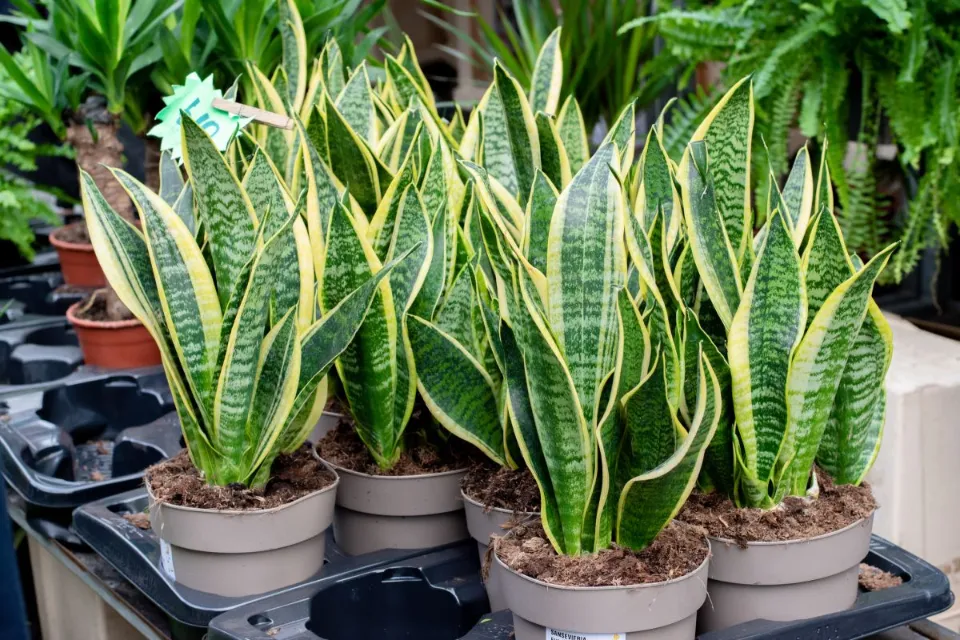
Low Temperature
Sansevieria trifasciata is a plant that is indigenous to arid and semi-arid areas. The ideal temperature range for them is between 70 and 90 degrees Fahrenheit.
The stress of low temperatures causes the plant’s leaves to turn yellow. Indoor snake plants near chilly, drafty windows will quickly turn yellow due to the extremely low temperatures.
Fungi That Cause Root Rot
As well as other soil-borne fungi and pseudofungal organisms, Fusarium and Pythium flourish in moist soil conditions. These pests cause the roots of snake plants to rot, which adversely affects water and nutrient absorption.
Due to moisture and nutrient deficiencies, snake plants develop leaf discoloration and yellow spots on their leaf blades.
Check the roots of your Sensivieria plant to determine if root rot fungi are causing yellow leaves. Rotten snake plant roots have a foul odor and are soft and soggy.
Pests
Scale, mealy bugs, and spider mites can attach to the underside of leaves and rob your plant of nutrients.
Isolate your plant if you think it may have pests to help stop the infestation from spreading to other plants.
Nutrient Deficiencies
Plant nutrient deficiencies are one of the most prevalent issues that gardeners deal with. Although there are numerous potential causes, a deficiency in soil nitrogen is one of the most frequent ones.
This may stunt the growth of a snake plant and cause the leaves to turn yellow. In order to correct this problem, gardeners need to add a nitrogen-rich fertilizer to the soil. As a result, the plant will be more likely to receive the nutrients it requires for healthy growth.
The pH of the soil should also be monitored by gardeners because too much or too little acidity can also result in nutrient deficiencies. Gardeners can make sure their snake plants remain strong and flourish by following these instructions.
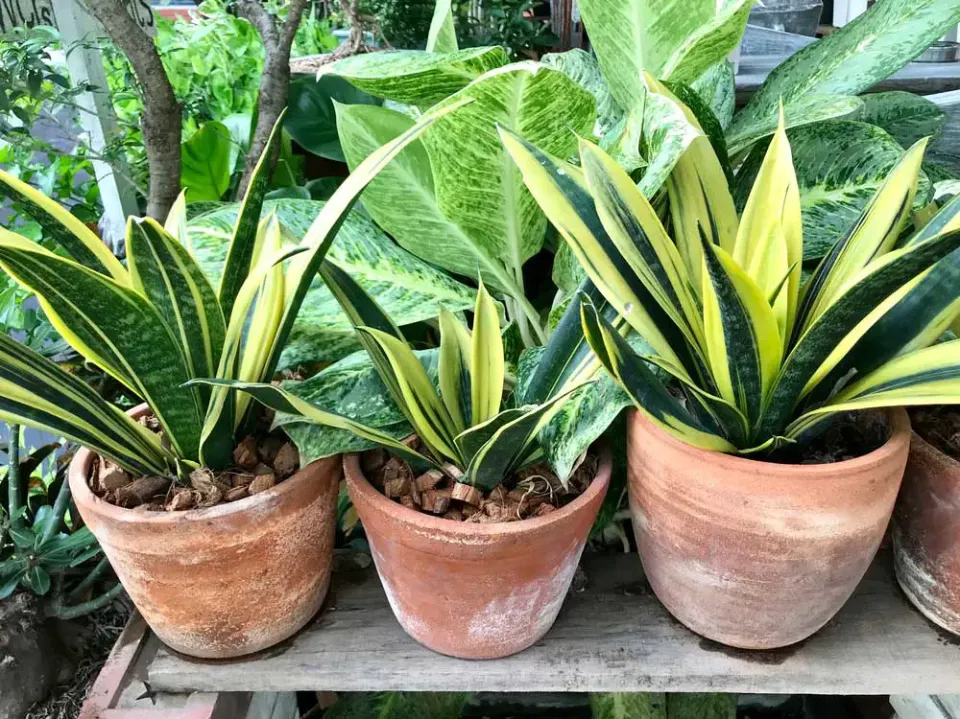
Rootbound
If you see that the leaves on your snake plant are starting to yellow, this might mean that the plant is either root-bound or crowded in its pot.
When a plant becomes rootbound, its roots begin to circle the inside of the pot and become entangled. Stunted growth, yellowing leaves, and even death are just a few issues that can result from this.
Examine the roots of your plant after gently removing it from its pot if you think it might be rootbound. If they are tightly intertwined, it’s time to transplant the plant into a larger pot.
Inadequate Drainage
If you notice that your snake plant’s leaves are turning yellow, it could be a sign that the plant is not getting enough drainage. Snake plants require soil that drains well in order to grow, and compacted or too-dense soil can lead to the rot of the roots.
Repot your snake plant into a container with lots of drainage holes if you suspect that there may be a problem with the drainage. To improve the drainage of the soil, you might also add some perlite or sand to it.
With the right care, your snake plant should quickly recover and the color of its leaves will turn back to green.
Overfertilizing in Winter
Roots are more likely to burn in soil that has been overly fertilized and is nutrient-rich. The mother-in-law’s tongue plant suffers from a lack of water and vital nutrients, which causes it to become stressed and develop yellow leaves.
When there is a high concentration of nutrients in the soil, snake plants are also susceptible to freezing temperatures.
It is, therefore, more likely that your plant will spot yellow patches on its leaves if you overfeed it with fertilizer during winter.
Overfeeding snake plants can also cause the leaves to yellow, especially if the roots are weak.
Natural Aging
It is normal for some older leaves to turn yellow and drop off as plants age, making room for new growth. Some plants choose to devote their energy to growing new plants instead of spending it on maintaining their leaves.
If this is the case, you will have yellowing of older leaves – near the base of the plant – only, and not new growth.
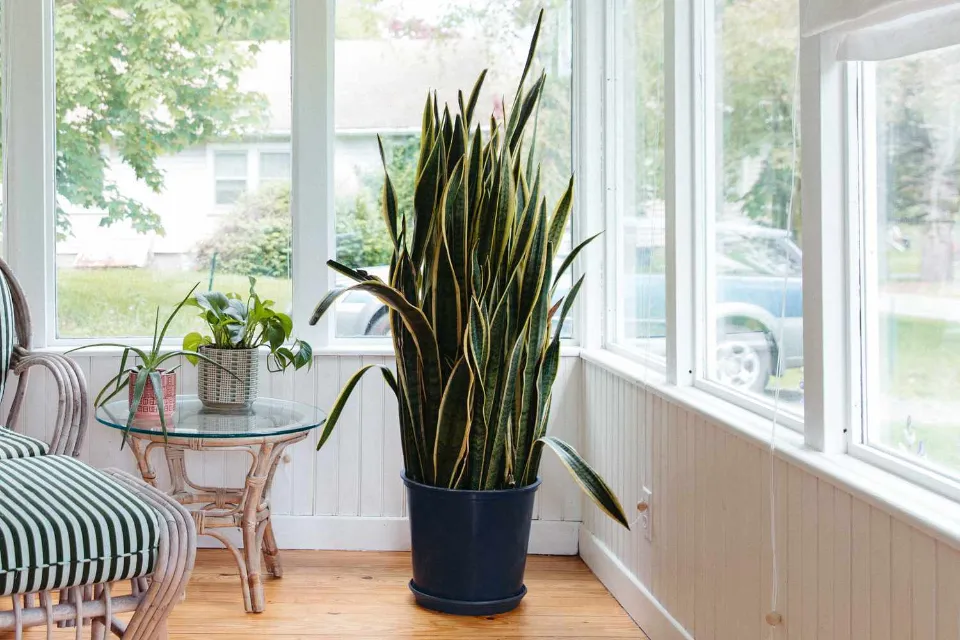
How to Save a Yellowing Snake Plant?
By repotting with a well-draining soil mixture, watering only when the soil dries out, and providing ideal temperature and light conditions, you can save your yellowing snake plant. Your snake plant can be saved and revived if you give it an iron supplement and remove any extra salts from the soil.
Here’s how to save a snake plant that’s turning yellow:
Water When the Soil Dries Up
Stop irrigating your snake plant until the soil dries up entirely if the yellowing is due to overwatering. Restart watering, but only once a week at most. As a general rule, wait until the top two inches of the soil feel dry before watering your snake plant.
If your soil is slow to drain, water your snake plant in the morning. Given the intense heat and sunlight during the day, this will aid in accelerating drainage rates.
Repot the Plant With a Fast Draining Soil Mix
A growing pot with drainage holes at the base is required for proper drainage, as is the use of a quick-draining soil mixture. For quick drainage, it is best to use a soil mixture containing perlite and coarse sand.
To increase the plant’s chances of surviving, prune off any rotten roots and yellow leaves prior to repotting your snake plant in a new soil mixture. While waiting, rake away any existing mulch before sprinkling coarse sand over the garden soil to improve drainage if you’re growing your snake plant in an outdoor garden.
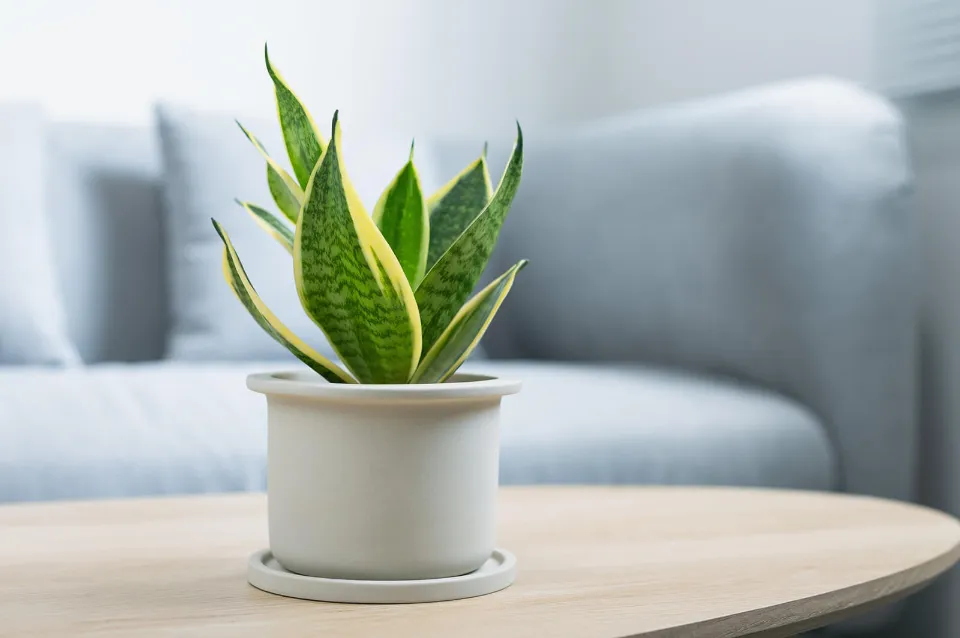
Maintain Temperatures Between 70-90°F
If you’re growing your Sansevieria inside a greenhouse, keep the temperature levels between 70-90 degrees Fahrenheit; in the interim, keep indoor snake plants away from draft-prone areas. They should be a little further away from windows, doorways, and AC vents.
Install Window Drapes to Filter Direct Sunlight
Your indoor snake plants will receive plenty of bright but filtered sunlight if you install drapes on the windows. Plant a taller shrub or tree nearby to protect outdoor snake plants from direct sunlight if they are yellowing from overexposure.
Repot in a Cactus Soil Mix
If your snake plant leaves are yellowing due to mineral deficiency in the soil, replace the regular soil with a succulent/cactus soil mix. Specially formulated potting soil mixes are rich in minerals that Sansevieria trifasciata requires to ward off chlorosis. You can order Succulent soil mixes on online marketplaces such as Amazon.
Treat the Soil With a Fungicide
The fungi that cause root rot can be killed with a number of commercial fungicides. An even better option is hydrogen peroxide because it eliminates a wide variety of soil-borne pathogens that cause root rot.
Drain the Excess Salts Out of the Soil
Snake plants need more nutrients during the growing season when temperatures are high, but not during winter. Make sure to avoid fertilizing before winter when temperatures are low and the plant’s roots are more susceptible to too much fertilizer salt in the soil. If you’ve already done this mistake, you should water the soil mixture lightly to leach any excess salts from the snake plant’s root zone.
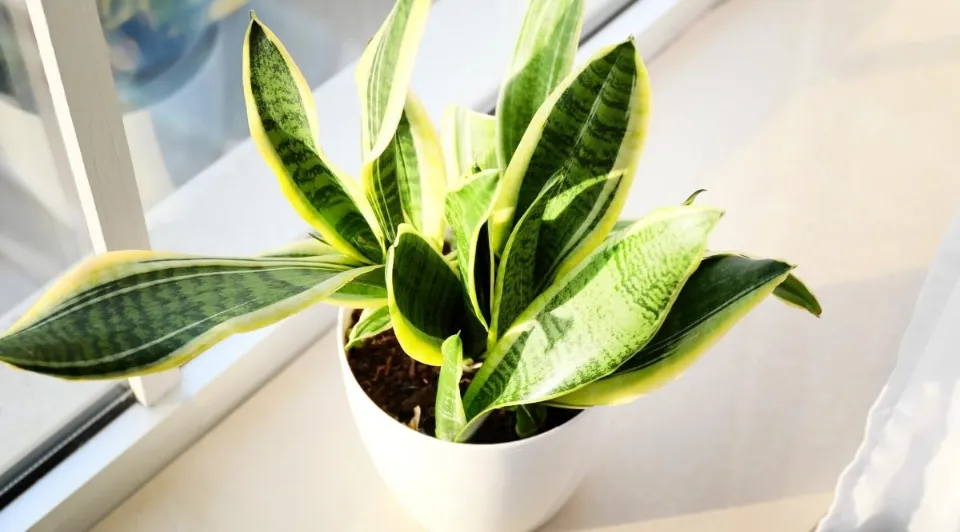
Tips for Preventing a Snake Plant from Turning Yellow
In any situation, prevention is always preferable to treatment, and growing snake plants is no exception. Your snake plant’s leaves can turn yellow, but there are a few easy things you can do to stop it.
Plant in Well-draining Soil
First of all, make sure you’re potting your snake plant in well-draining soil. As we mentioned before, snake plants need well-drained soil in order to thrive. Yellow leaves may result from the roots becoming rotted as a result of overly compacted or dense soil.
To prevent this from happening, make sure you pot your snake plant in a light and airy potting mix that drains well, a cactus soil mix works well. To improve drainage, you can also mix in some perlite or sand.
Don’t Over-water
Don’t overwater your snake plant—this is another crucial point to bear in mind. In their leaves, snake plants, which are succulents, store water. As a result, they require less watering than other plants do.
In fact, if they are overwatered, snake plants can actually rot. So make sure to only water your snake plant when the soil feels completely dry to the touch.
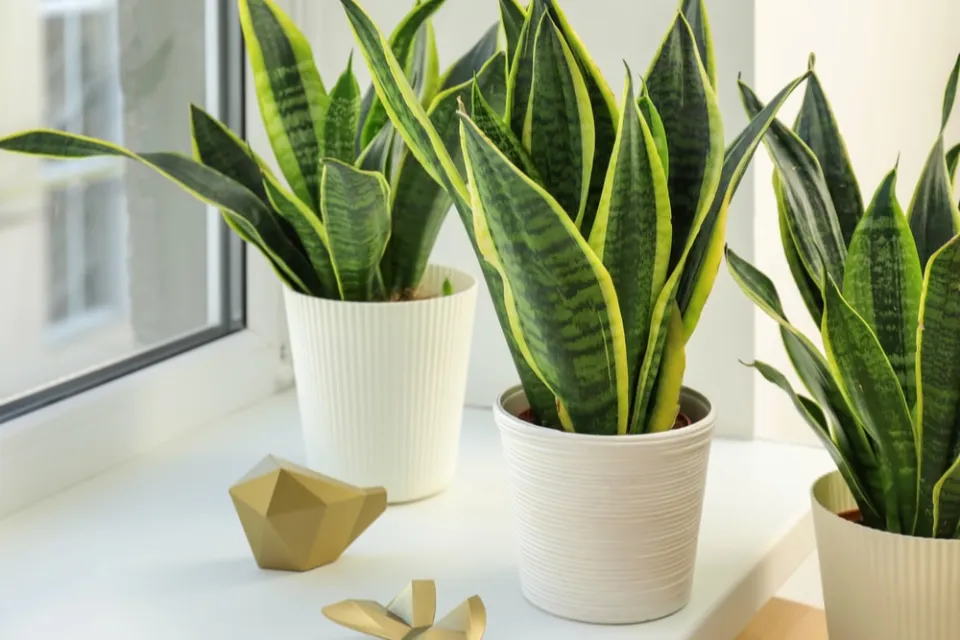
Don’t Over-fertilize
This has already been mentioned, but it bears mentioning again. Don’t fertilize your snake plant excessively. Snake plants don’t need a lot of fertilizer and too much can actually do more harm than good.
The growing season is the only time you should fertilize your snake plant, and even then, only once per month, and only with diluted fertilizer.
Make Sure It Gets Bright, Indirect Light
Ensure that your snake plant is receiving adequate light. Snake plants favor direct, bright light. Their leaves could start to yellow if they don’t get enough light.
In order to avoid this, try moving your snake plant to a location that receives more light if you notice that its leaves are turning yellow.
Maintain Temperatures Between 50-80°F
Check the temperature one last time. Snake plants prefer temperatures between 50 and 80 degrees Fahrenheit. Their leaves may start to turn yellow if it is too hot or too cold.
You can avoid your snake plant turning yellow by adhering to these straightforward suggestions. And if you do notice the leaves starting to yellow, you can take action to fix the issue and restore your snake plant to health.
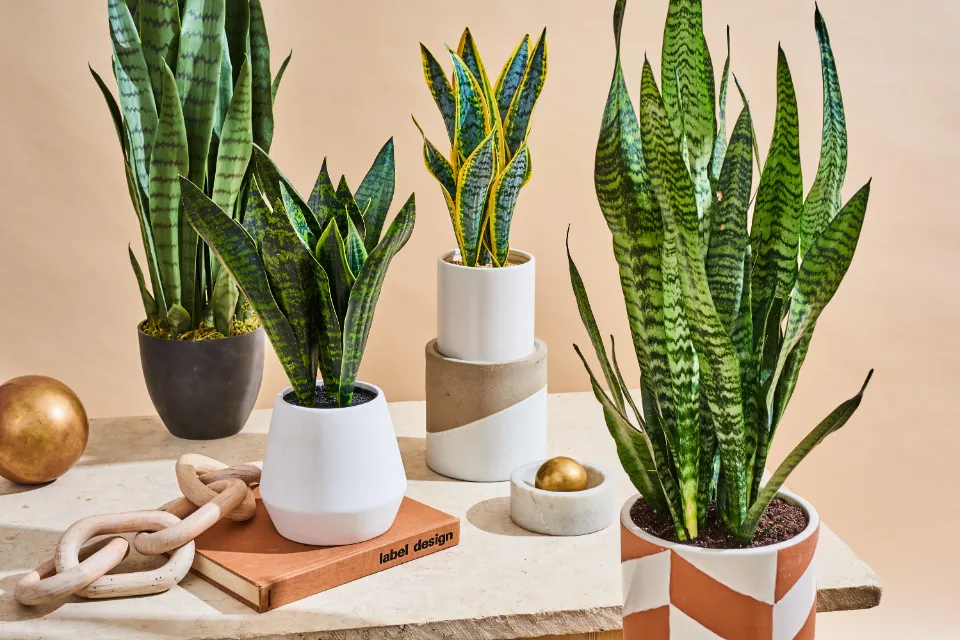
FAQs
What Do You Do When Snake Plant Leaves Turn Yellow?
The warning sign that your snake plant is probably in trouble is when its leaves begin to turn yellow. If a lot of leaves turn yellow and drop, it’s a lot of stress. It’s time to take action, so identify the issue from the list above and try to solve it.
Should I Remove Yellow Leaves from Snake Plants?
One’s preference may be to remove yellowing leaves. I usually give them a gentle tug, and if they come off without effort, I do as well.
What Does An Overwatered Snake Plant Look Like?
Plants that are overwatered develop limp, yellow leaves that drop and fall off. On the leaves, they can also develop mushy brown or black spots.
My snake plants usually have the leaves flop over before they turn yellow. Peel back on the watering if you see it as a warning sign!
Can Yellow Snake Plant Leaves Turn Green Again?
No, yellow or dead leaves will not turn into healthy leaves again. The plant abandons them after they run out of chloroform.
Do Snake Plants Leaves Turn Yellow in Fall?
No, these plant leaves don’t change seasonally like a maple tree. A problem is present if your plant’s leaves are turning yellow. If it is outside, perhaps the cool weather is making it worse.
Summary: Why is My Snake Plant Turning Yellow?
Although the yellowing of snake plant leaves may be caused by several different factors, the most common causes are water pressure, root rot, excessive direct light, temperature fluctuations, fungal diseases, pests and nutritional deficiencies.
However, if your snake grass shows some yellow leaves, don’t worry. Through a little investigation, you should be able to find out the cause and take measures to solve the problem. There is a healthy snake plant.
If you have any questions, please leave a comment. My Prime Home tries to give you the best home improvement information. Don’t forget to share the post. Thank you for reading.
Read about
